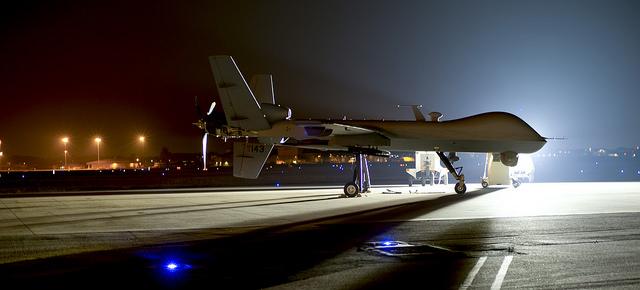I was recently asked to give a lecture at ANU about the Revolution in Military Affairs (RMA). For those born after 1990—of which I encounter a distressingly large number in my professional life these days—RMA was the buzz-phrase du jour for military types entranced by the clinical performance of American forces and technology of the Gulf War in 1991. Predating the popularisation of ‘shock and awe‘ by over a decade, the application of advanced sensors, stealth and precision weapons including cruise missiles seemingly heralded a new wave of warfare in which strategic aims could be easily achieved through technology, and with remarkably few losses. (On the winning side at least—the other guys didn’t fare so well.)
So striking was the coalition victory at the time, that embarrassing failures like the ‘great Scud hunt‘ barely registered. And since there was no full-scale invasion of Iraq, the profound difficulties of counterinsurgency, even for RMA-enabled forces, didn’t spoil the celebration. It was difficult for the few hardy souls swimming against the tide to get a hearing. Israeli scholar Martin van Creveld managed to publish a major book arguing that high-tech state on state war was so yesterday about the same time that Iraq was running up the white flag in 1991:
We are entering an era … of warfare between ethnic and religious groups. Even as familiar forms of armed conflict are sinking into the dustbin of the past, radically new ones are raising their heads … Already today the military power fielded by the principal developed societies in both “West” and “East” is … more illusion than substance.
Van Creveld’s timing might have been poor, but his message was eerily prescient viewed from 2015. His prediction of the coming of low-tech adversaries who aren’t state-based, but instead spring from tribal and religious groups was spot on. I well recall him speaking to a packed audience of ADF capability developers back in the mid-1990s. They were falling over themselves to sign up for the RMA, especially Air Force—always the first in line for new technology. As a budding professional contrarian, I was learning at the feet of the master when he flicked through a few ‘ooh-ah’ slides of precision guided weapons and other sophisticated weaponry before dismissing it contemptuously as ‘high-tech junk’.
As we now know, the past 20 years has been as much van Creveld as RMA. ‘High tech junk’ carried the first phase of the second war against Iraq, but it proved remarkably ineffective in the later insurgency phases, which are arguably still running today. In fact, you don’t hear RMA mentioned much anymore. Partly that’s because fashions change and new buzzwords take over—anyone for network centric warfare?—but partly because it never was what it seemed at the time.
The largely futile hunt for Scuds in the deserts of Iraq in 1991 actually better represented the long-term trends in warfare than did the hideous tactical error of Iraqi forces in concentrating their forces and digging into well-defined positions. That just made them a perfect showcase for the effectiveness of superior ISR in finding them and precision firepower in destroying them. As I’ve written here in the past, the trend in warfare over centuries has been towards an ever more rapid deployment of ever more accurate and lethal weaponry. The RMA was simply ‘more of the same’ in those trends. The result has been an ever greater dispersion of forces in order to limit exposure to the new technologies, resulting in lower daily casualty rates.
When operating against technically sophisticated adversaries, irregular forces take that advice to heart, melting away into the jungle, mountains or the civilian population. Ambushes and raids by small groups who choose the time and place of engagements are the order of the day. Even groups such as ISIL who aim to seize and hold territory can minimise their exposure to coalition air strikes by staying close to civilian centres. They’ve also modified their combat tactics to be less obvious targets when manoeuvring in battle.
The response to these tactics can’t be even more investment in ‘silver bullet’ platforms, doubling down on ‘high-tech junk’. The answer to a foe that’s highly dispersed and adaptable isn’t ‘shock and awe’, it’s ‘here and now’—the ability to be there to act decisively when they fleetingly show themselves. If you look at the platforms that have been most effective in the Afghanistan and Iraq–Syria theatres, you’d conclude that the persistence and ability to hit a target with adequate (rather than awesome) force that a Reaper drone brings with it is preferable to the greater firepower but ephemeral presence of a $100 million fast jet. Both use the ISR and precision weapons of RMA, but one does it far more efficiently.
Of course, that’s only one facet of modern warfare. The danger of state-on-state confrontation hasn’t gone away, and there are different challenges to face in that realm. But for reasons I’ll explain in my next post, some of the answers might have more in common with the prosecution of irregular warfare than you’d first think.
